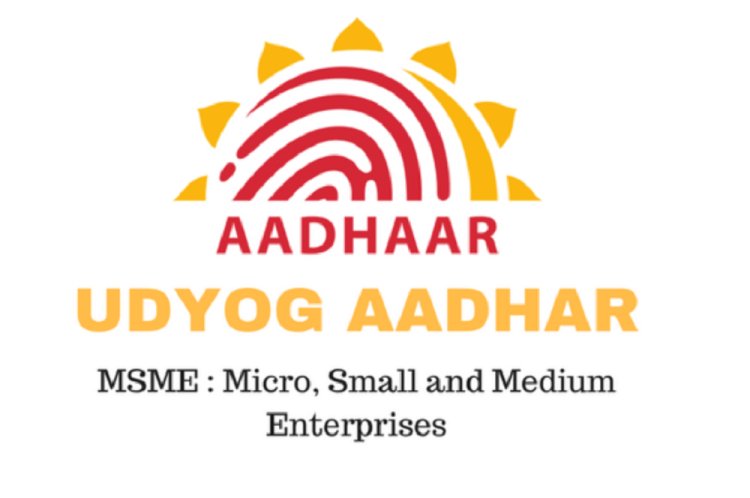A Comprehensive Guide for Small and Medium Enterprises
Introduction : The Government of India has always been keen on promoting entrepreneurship and supporting small and medium enterprises (SMEs). One of the key initiatives in this regard is the Udyog Aadhaar Registration, a simplified process that allows small businesses to register and benefit from various government schemes. This article provides a detailed guide on Udyog Aadhaar Registration, its benefits, and how it can empower your business.

What is Udyog Aadhaar?
Udyog Aadhaar is a unique identification number provided by the Ministry of Micro, Small, and Medium Enterprises (MSME) to small and medium-sized businesses in India. Introduced in 2015, it simplifies the registration process for MSMEs, making it easier for businesses to access government schemes and benefits.
Previously, the registration process for MSMEs was complex, involving multiple forms and certifications. Udyog Aadhaar consolidates these into a single-page form, streamlining the process for entrepreneurs.
Who Should Register for Udyog Aadhaar?
Any business entity falling under the categories of micro, small, or medium enterprises can apply for Udyog Aadhaar. This includes:
- Manufacturing Units: Entities involved in producing goods.
- Service Providers: Businesses offering services in various sectors.
- Sole Proprietorships: Individual entrepreneurs running their own business.
- Partnership Firms: Businesses owned and managed by two or more individuals.
- Hindu Undivided Family (HUF): Family-owned businesses.
- Limited Liability Partnerships (LLPs): Firms where partners have limited liabilities.
- Private Limited Companies: Companies registered under the Companies Act.
Benefits of Udyog Aadhaar Registration
- Access to Government Schemes: Registered MSMEs can avail various government subsidies, including those related to technology upgrades, quality certifications, and capital investments.
- Easier Loan Approvals: Banks and financial institutions offer priority lending to Udyog Aadhaar-registered enterprises, often at lower interest rates.
- Protection Against Delayed Payments: MSMEs can benefit from legal protections against delays in payments from buyers.
- Concession on Utility Bills: Registered units may receive concessions on electricity and other utility bills.
- Exemption from Direct Taxes: Certain MSMEs are eligible for tax exemptions and rebates under specific schemes.
- Participation in International Trade Fairs: Registered businesses can participate in international trade fairs and exhibitions organized by the government, helping them expand their market reach.
How to Register for Udyog Aadhaar?
The Udyog Aadhaar registration process is entirely online, free of cost, and simple to complete. Here's a step-by-step guide:
-
Visit the Official Website: Go to the Udyog Aadhaar registration portal (https://udyogaadhaar.gov.in/).
-
Aadhaar Number: Enter your 12-digit Aadhaar number issued by the Unique Identification Authority of India (UIDAI). The Aadhaar card must belong to the owner or proprietor of the business.
-
Name of the Owner: Fill in the name of the business owner as mentioned on the Aadhaar card.
-
Business Details: Provide details about your enterprise, including its name, type, and activity (manufacturing or service).
-
Bank Account Information: Enter the bank details of the business, including the account number and IFSC code.
-
Major Activity: Specify the major activity of your enterprise – either manufacturing or service.
-
National Industry Classification (NIC) Code: Select the appropriate NIC code that corresponds to your business activity.
-
Investment Details: Provide information about the total investment in plant, machinery, or equipment.
-
Location and Address: Enter the complete postal address of the business, including the state, district, and pin code.
-
Submit the Application: After filling in all the details, review the form for accuracy, and then submit it. Upon successful submission, you will receive an acknowledgment number.
Documents Required for Udyog Aadhaar Registration
- Aadhaar Card: The Aadhaar number of the business owner or authorized signatory.
- Business Address Proof: Utility bills, lease agreements, or property tax receipts.
- Bank Account Details: A copy of the canceled cheque or passbook.
- Business Registration Proof: Partnership deed, GST registration certificate, or any other document proving the existence of the business.
Udyog Aadhaar Memorandum (UAM)
After successful registration, you will receive an Udyog Aadhaar Memorandum (UAM), a unique identification number that certifies your business as an MSME. This document is crucial for accessing government benefits and schemes.
Transition to Udyam Registration
As of July 2020, Udyog Aadhaar has been replaced by the Udyam Registration process, which is more comprehensive and aligned with global standards. However, businesses that were previously registered under Udyog Aadhaar can easily migrate to Udyam Registration.
Conclusion
Udyog Aadhaar Registration is a game-changer for small and medium enterprises in India. By simplifying the registration process and providing access to a range of benefits, it empowers businesses to grow, innovate, and compete in both domestic and international markets. If you haven't registered your business yet, now is the time to take advantage of this initiative and unlock new opportunities for your enterprise.
If you want to apply PAN card, apply through this link https://pancardonlineindia.com/
What's Your Reaction?
















